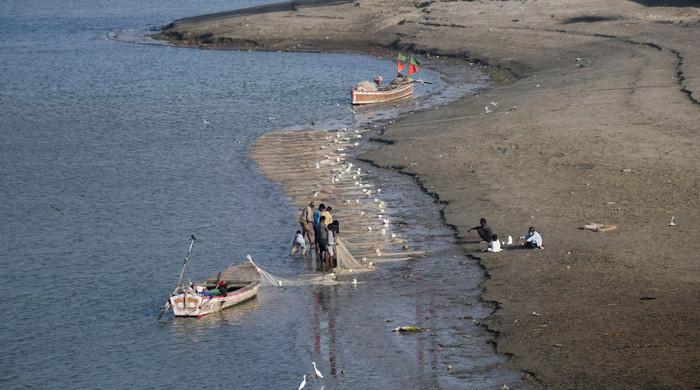India’s Canal Expansion Threatens Pakistan’s Water Supply
Islamabad: According to water expert Engineer Arshad H Abbasi, India’s planned expansion of the Ranbir canal could diminish Pakistan’s water supply from the Chenab River by approximately 20%. Abbasi, who has participated in Track-II diplomacy with India on water matters, stated this reduction equates to over five million acre-feet (MAF) of water annually, which is valued at around $10 billion in the global market. This shortfall would severely impact Punjab, the country’s main agricultural region.
A report released on May 16 indicated India is considering reducing Pakistan’s water allocation by expanding the Ranbir Canal along the Chenab River. The proposed project aims to double the canal’s length from 60 kilometers to 120 kilometers.
Abbasi clarified that the Chenab River’s average flow is about 28,000 cusecs.
Indus Waters Treaty Concerns
“While India has historically utilized the Ranbir Canal, a 19th-century irrigation channel established before the 1960 Indus Waters Treaty (IWT), the suggested expansion prompts inquiries regarding compliance with the Indus Waters Treaty. Annexure C of the IWT specifically regulates India’s agricultural water usage from western rivers such as the Chenab, implementing stringent limits on withdrawals.”
Whether water withdrawals from the Chenab adhere to the specific quantities outlined in the Indus Waters Treaty remains information solely accessible to Pakistan’s Ministry of Water Resources and the Indus Waters Commissioner. Ambiguity surrounds practical enforcement and oversight.
Under Article VI of the treaty, both India and Pakistan must regularly exchange river and canal data. Typically, India provides this data in hard copy, either by fax or postal services, raising concerns about its accuracy and openness. The treaty allowed Pakistan to inspect the Jhelum, Indus, and Chenab rivers’ watersheds two or three times each year.
However, the treaty’s suspension and current geopolitical tensions have obstructed these inspections, leaving vital questions unanswered. The treaty permits a maximum withdrawal of 1,000 cusecs from April 15 to October 14, and 350 cusecs from October 15 to April 14.
If India is operating the Ranbir Canal at maximum capacity, it would violate the treaty, significantly affecting downstream flows into Pakistan.
Abbasi mentioned that he proposed installing a real-time telemetry system on the three western rivers downstream of the Baglihar Dam to the Ministry of Water Resources in 2008, but it was never implemented.
Abbasi highlighted that India and China have established a real-time river flow data-sharing system on the Brahmaputra and Sutlej Rivers.
The Ranbir and Pratap Canals Project, budgeted at $41 million and $18 million (based on 2008-09 estimates), was conceived in 2003 and projected to finish in 14 and 12 years, respectively. However, they remained inactive until recently, suggesting a strategic water approach by New Delhi.



Comments (0)
No comments yet. Be the first to comment!
Leave a Comment